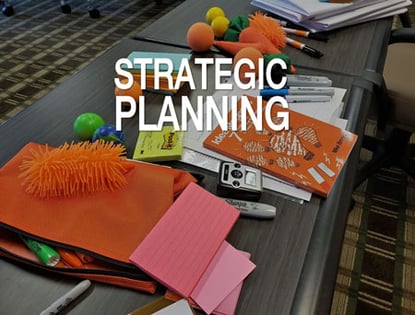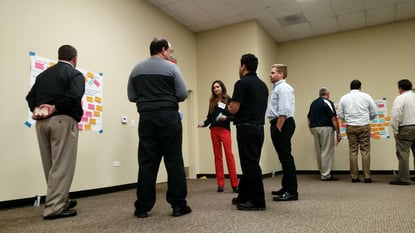As your organization starts to explore and develop strategic plans for next year, strategy retreats will be a focus. Are you thinking about getting your executive team away from the office to discuss strategy? Use this offsite meeting checklist to ensure your executives are ready to productively focus and engage in strategic planning.
Your Strategy Offsite Meeting Checklist

1. Identify what you want the meeting to accomplish
- What are the organizational objectives?
- What are the interpersonal objectives (how participants interact and bond with each other)?
- What are the individual objectives (how participants grow and develop)?
- What are the overall experience objectives (how the time away should positively engage the participants)?
The multiple objectives account for varied impacts that an offsite meeting can deliver. The organizational outcome should drive the business purpose behind the meeting. The interpersonal outcomes correspond will direct what you do to foster relationships among the entire group and specific groups within the group. The targeted individual participant outcome relates to making sure you think about participants’ personal interests as you design the meeting. Maximizing the alignment among the first three outcomes will create the best possible experience for everyone. If you go overboard on one objective and neglect the others, the off-site meeting will fall short.
Strategy Offsite Meeting Checklist Tool: This free resource shares ideas to create strategic collaboration within the group.
2. Create the attendee list
- Who should attend based on his or her title / organizational role?
- Who should be invited to attend because they:
- Are future senior leaders in the organization
- Provide fresh company, market, or industry perspectives
- Will challenge the team’s thinking to be more diverse and innovative
Creating two lists of invitees will expand participant diversity and make sure you are thinking accurately about your organization’s strategy. For the first list, identify who needs to be present based on the meeting’s organizational objectives. These are the people who have the right titles to make the guest list. With the second list, think about who SHOULD be there because of what they’ll contribute, even if they aren’t at the right level of the org chart to be invited to the off-site. Taking this approach – and ignoring any objections it will create - allows you to be more inclusive than you might otherwise be. While diversifying the offsite meeting attendees may be a new concept for your team, taking this step will be the best decision you make about the meeting.
Strategy Offsite Meeting Checklist Tool: These resources will highlight the perspectives and voices you need to include in your strategy offsite meeting.
3. Explore how to manage the strategic focus
Rank the following based on how much attention and time they warrant during the offsite strategy meeting:
- Strengthening / revising your foundational strategy statements
- Identifying internal weaknesses and vulnerabilities
- Better understanding opportunities and challenges with the current situation
- Addressing your market’s competitive situation
- Anticipating future market changes
- Developing new business models
- Strengthening and expanding your brand
- Exploring innovative strategies
- Organizational transformation
- Other topics
Determining the important areas for the team to focus its strategic attention is a vital part of the checklist. After this initial ranking, think through the time you’ll devote to the priority topics, plus what strategy exercises are best suited for the team. You want to make sure that you use exercises that allow everyone there to actively contribute to the strategic thinking and conversations.
Strategy Offsite Meeting Checklist Tool: Here’s a list of Brainzooming strategy exercises for the varied situations your organization may need to address.
4, Selecting how you’ll generate strategic interaction and conversations
- Full group activities that create interaction and active conversation among all participants
- Opportunities to divide everyone into smaller sub-groups to increase the participation opportunities
- Offering individual time for people to work, reflect, and unplug
Plan for these three different types of meeting situations. Vary the time for full group vs. small group activities based on your meeting objectives. Using smaller groups is a highly productive way to get work done since you can create concurrent activities. Question-based exercises are a powerful way to engage small groups in strategic thinking. Use large groups when one person or just a few people have more informed perspectives than everyone else. Additionally, figure that that fifteen-to-twenty percent of any multi-day meeting should be focused on individual time.
Strategy Offsite Meeting Checklist Tool: These guidelines will help you in using strategic thinking exercises with groups of any size.
What’s Next?
Never leave planning an offsite strategy meeting to someone in your organization who doesn’t have a full view of how the event needs to support developing your strategy. If an offsite meeting is important enough for you as an executive to fund, it’s important enough for you to be actively involved in planning it.
Strategy Offsite Meeting Checklist Tool: The Brainzooming Strategic Planning Toolkit shares links to thirty articles for strategic planning success.






